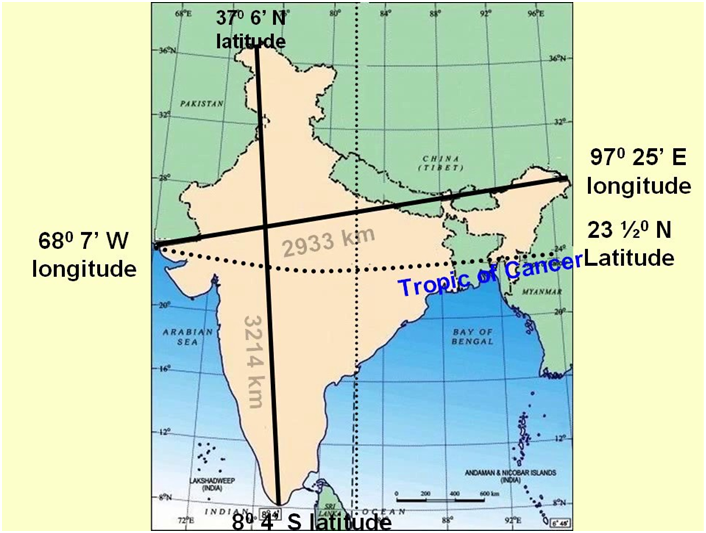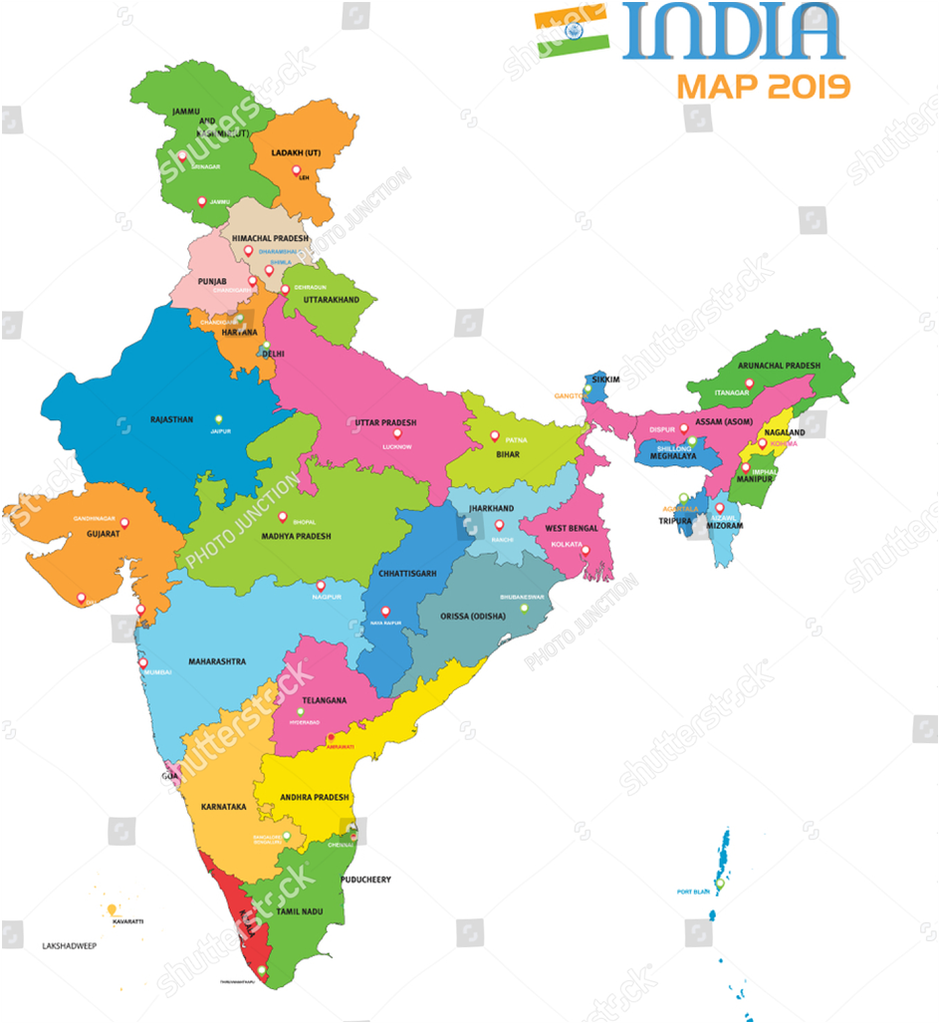- Books Name
- Learn with me Social Science Book
- Publication
- Learn with me publication
- Course
- CBSE Class 9
- Subject
- Social Science
INDIA — SIZE AND LOCATION
India is an ancient civilisation but now it is a developing nation. It has shown remarkable progress in various fields.
Location
- India lies entirely in the Northern Hemisphere.
- India’s mainland extends between
 latitudes, and
latitudes, and  longitudes.
longitudes. - The Tropic of Cancer
 divides India into two almost equal parts.
divides India into two almost equal parts. - The island groups of Lakshadweep and Andman & Nicobar are also part of India.

Size
- Covering an area of 3.28 million square kilometres, India’s total area is 2.4% of the total geographical area of the world.
- India is the world’s seventh largest country with a land boundary of about 15,200 km, with total length of the coastline being 7,516.6 km.
- India’s east-west extent appears to be smaller than the north-south extent.
- India’s latitudinal and longitudinal extent is about 30 degrees.
- India’s standard time is based on 82.30 degrees E meridian, which passes near Mirzapur in UP.
- Latitudinal extent influences duration of the day and night.
India and the World
- The Indian landmass is centrally located between West and East Asia.
- The trans Indian ocean routes connect countries in the west and counties in the east.
- India’s protruding Deccan Peninsula helped India to establish close contacts with West Asia, Africa and Europe, South-east and East Asia.
- India’s contacts with the world via land routes are much more than her maritime contacts.
- India is the only nation which has a ocean named after it.
- India has contributed a lot to the world in forms of ideas, philosophies (Upanishads, Ramayana, Panchtantra) and mathematics (Indian numerals and decimal system).
- In exchange, India’s architecture was influenced by Greek sculpture and architectural styles from West Asia.


 Learn with me publication
Learn with me publication
